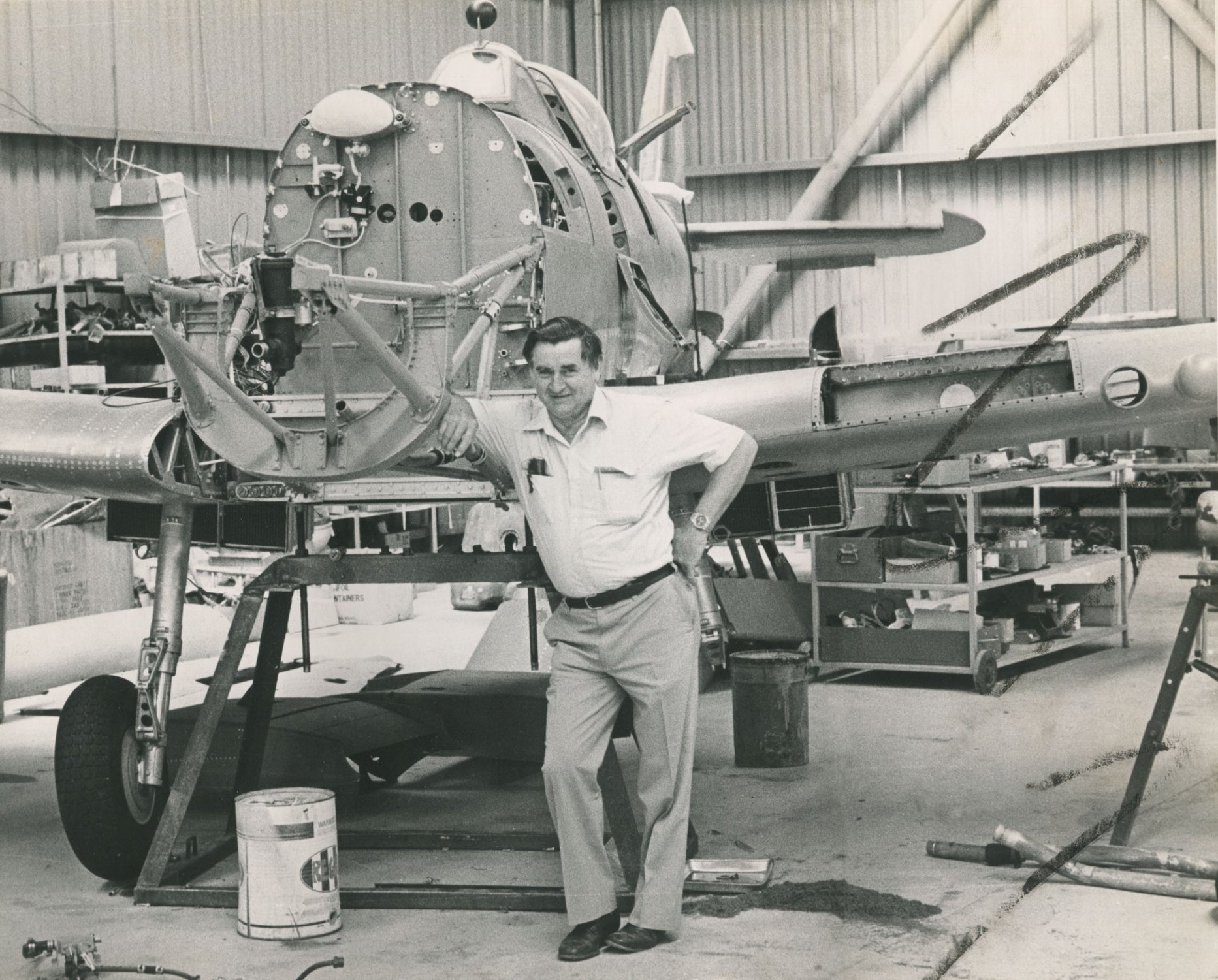
Legacy in Flight:
Col Pay
Col Pay established the art of vintage military aircraft restoration through Vintage Fighter Restorations at Scone. Pay developed an international reputation for excellence based on his experience returning rare World War II fighters to the air.

Col Pay with his Mk.VIII Spitfire under restoration at Scone in the 1980s.
Courtesy of the Pay Family

Col Pay’s passion for aviation and Warbirds left a lasting legacy. Every time one of these historic treasures takes to the skies, it is a reminder to current and future generations of the work it took to achieve the range and nature of the Warbird movement we see in Australia today.
Born in 1932, Colin ‘Col’ Pay learned to fly at Narromine in 1952 and established a crop-spraying business flying Tiger Moth biplanes.
Young Col Pay
Image courtesy of the Pay Family
In 1963, Col sowed the first wheat crop from the air at Narromine. He pioneered aerial spraying for the cotton industry and aerial fire bombing. He moved to Scone from Wee Waa in 1964, forming Pays Air Service and working throughout New South Wales.
Col Pay and Auster aircraft in 1952
Image courtesy of the Pay Family
Col was one of the founders of warbird restoration, building both a collection and a business.
Image courtesy of the Pay Family
In 2007, at the age of 75, he was still innovating and died while testing a new fire-bombing system. Col Pay was inducted into the Australian Aviation Hall of Fame in 2014.
Image courtesy of the Pay Family




